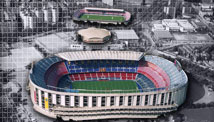Did you know...?

News article on: Camp Nou: 50th anniversary
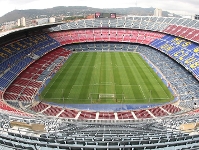
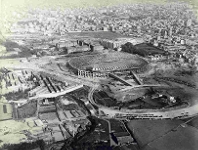
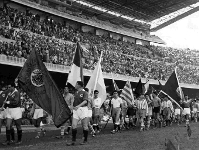

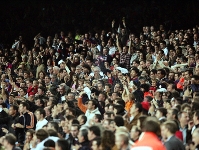
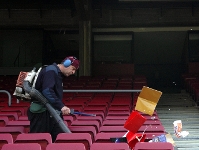
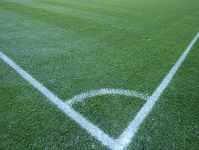

Did you know...?
A football stadium has a hidden story that goes well beyond the matches
that justify its existence. We’ve collected together for you here some of these
fascinating facts about the Camp Nou.
Building the Camp Nou
- Work began on the Camp Nou at 11 am on 29th November 1954. In the initial phase, ten lorries and two excavators were used.
- In the preliminary phases of the project, some 57,354 cubic metres of earth were removed.
- During the construction of the stadium, 9,056 metres of handrails were installed.
- More than four and a half million kilograms of iron were used to build the stadium.
- The first stone to be laid in 1954, which is kept in the stadium chapel, is the same stone that had been laid at the beginning of the construction of the old Les Corts stadium in 1922. It was found when the pitch was lowered at the old stadium.
- During the in inauguration ceremony in 1957, 10,000 doves and 6,000 balloons in the Barça colours were released.
The Museum
- The FC Barcelona Museum, located inside the stadium, contains some 1,410 objects and documents and covers 3,500 m2.
- Since it was inaugurated in 1984, the Museum has received approximately 16 million visitors.
The capacity
The original capacity of the Camp Nou was 93,000 spectators. At the moment, it can hold 98,918, making it the biggest football stadium in Europe.
- 41% of the spectators are under cover. The average attendance is 73,225 – the highest in Europe.
- The record attendance at the stadium is 120,000 spectators, in the match between Barça and Juventus in the quarterfinals of the European Cup on March 5th 1986.
Matchdays
- On matchdays, there are some 200 points of sale of food and drinks for the spectators.
- During evening matches, the stadium consumes 14,860 kilowatts of electricity in five hours.
- The Camp Nou employs about 580 people, most of them stewards and security guards.
Secrets of the stadium
- There are 107 normal entry/exit gates and almost 50 emergency exits.
- In the stadium there are 8 lifts, which rise to a height equivalent to eight storeys.
- The Camp Nou has one of the most powerful public address systems in the world, with an output of 140,000 watts.
- The Camp Nou pitch is watered daily by 52 water sprinklers. On the hottest days of the year it needs approximately 54,600 litres of water per day.
- The pitch is made up of about 15,000 million blades of grass. It is cut regularly to a height of 18 millimetres.
- The white lines used to mark out the playing area are painted with 70 litres of ecological paint.
- There are 147 toilets, 464 washbasins and 966 urinals.
- The halogen floodlights produce up to 1,750 lux per lamp.
- The entire stadium is lit by 11,190 lighting points, including spotlights, fluorescents tubes and lamps. These produce a total of 4,500 kilowatts.
- The two gigantic video scoreboards are 12 metres long and 8 meters high and are the biggest to be found in any football stadium in Europe.
- One of the most important features of the stadium is the security system, which includes 225 closed circuit cameras.
Managers and goals
- In its 50-year history, the Camp Nou has seen 30 different first team managers.
- The biggest score line witnessed in the Camp Nou in international competitions is 8-0. This has happened on two occasions: Barça v Apollon (Cyprus) in the European Cup Winners Cup (15.09.1982) and Barça v Matador Puchov (Slovakia) in the UEFA Cup (15.10. 2003).
50th Camp Nou anniversary
Getting here
Official sponsors
Copyright - FCBarcelona | Legal Terms | Buy tickets FC Barcelona | This is the FC Barcelona official website
